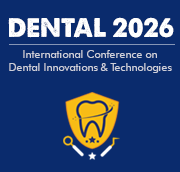Title : Case report: A rare presentation of florid cemento-osseous dysplasia
Abstract:
Introduction: Florid Cemento-Osseous Dysplasia (FCOD) is a benign fibro-osseous lesion that primarily affects the tooth-bearing regions of the jaws. It is often detected incidentally during radiographic evaluations and generally does not require invasive treatment. This report describes a patient who presented with an incidental radiolucency in the lower left quadrant (LLQ) and mild associated symptoms, eventually diagnosed as FCOD.
Background: FCOD is a benign fibro-osseous condition that involves the replacement of normal bone with fibrous tissue and cementum- like or osseous material. It typically affects multiple quadrants of the jaw symmetrically and is characterised radiographically by mixed radiolucent- radiopaque lesions. FCOD is most commonly found in middle-aged, black women with the prevalence of 5.5%, with a female-to-male ratio of approximately 9:1.
Clinically, FCOD is usually asymptomatic but may occasionally present with mild discomfort, particularly if secondary infection or cortical expansion occurs. Its radiographic hallmark includes radiopaque masses surrounded by a radiolucent halo, distinguishing it from other fibro-osseous lesions. Management is typically conservative, focusing on education and regular monitoring to prevent complications such as secondary infection or bone sequestration.
History & Examination: A 46-year-old patient was referred for the investigation of an incidental radiolucency at the apex of LL4. She reported occasional pain and sensitivity in the LLQ, especially on biting, but could not identify the exact tooth causing discomfort. The patient’s
dental history revealed hypodontia with several missing teeth. The medical history indicated that the patient was fit and well, though allergic to ibuprofen. Social history was unremarkable.
Intraoral examination revealed that LL4 was slightly tender to percussion (TTP), with no other abnormalities in the LLQ. The overlying mucosa appeared normal, with no signs of swelling or sinus tract formation.
Radiographic Investigations: An orthopantomogram (OPG) revealed no caries or periodontal bone loss. Root morphology appeared normal, with no unerupted teeth. However, a large mixed radiolucent-radiopaque lesion was identified in the LL3-6 region, with possible apical displacement of the inferior dental nerve. A radiolucency was noted around LL4’s root, though the periodontal ligament space remained visible.
Cone-beam computed tomography (CBCT) imaging confirmed the presence of characteristic mixed radiolucent- radiopaque lesions in the LL3-6 region, consistent with FCOD. These lesions demonstrated sclerotic masses surrounded by radiolucent halos, leading to the definitive diagnosis.
Conclusion: This case highlights the importance of imaging in diagnosing conditions like FCOD, which are often asymptomatic and discovered incidentally. The conservative approach adopted here emphasises patient education and regular monitoring to prevent complications, ensuring long-term stability and optimal patient care.



